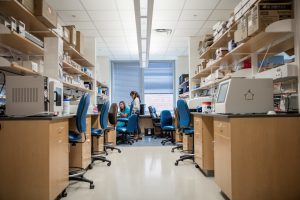- Homepage
- Departments
- Research Safety & Services
- Chemical and Lab Safety
- Lab Safety Manual
Lab Safety Manual
- Pest Management
- Fire Plan Review and Inspection
- Building Codes Enforcement
- ADA Assessment
- Applicable Building Codes
- Building Emergency Coordinators
- Certificate of Completion or Occupancy
- Chartfield Form Codes Permits
- Inspections
- Permit Application Process
- PERMIT APPLICATIONS AND FORMS
- Permit Fee Schedule
- Permit Instructions
- Plan Submittal Guidelines
- Temporary Structures on Campus – Including Tents
- Insurance and Risk Management
- Occupational Medicine
- Industrial Hygiene & Occupational Safety
- Ergonomics
- Camps
- Drones/UAS
- Building and Contents
- Boating & Dive Safety
- Automobile
- Report Lab Closeout
- Radiation Safety
- Hazardous Waste Management
- Chemical and Lab Safety
- Standard Operating Procedures
- Safety Surveys
- Peroxide Forming Compounds
- New Labs, Moving Labs & Closeouts
- Nanoparticles
- Minors and Visitors in the Lab
- Lessons Learned
- Lab Ventilation
- Lab Signage
- Lab Safety Manual
- Hydrofluoric Acid
- Greenhouse Safety
- First Aid Kit Info
- Equipment Purchase Approval
- Equipment Decontamination
- DEA – Controlled Substances
- DBPR – Pharmaceutical Products
- Cryogens
- Compressed Gas
- Chemical Storage and Management
- Chemical Spills
- Chemical Safety Information
- Chemical Inventory
- Chemical Hygiene Plan
- Chemical Exposures
- Acids That Deserve Special Attention
- Biological Safety
- Vaccination Policy for Research Personnel
- Shipping and Transport of Biological Materials
- Select Agents
- Research Involving Flying Insects
- Recombinant & Synthetic Nucleic Acids
- Plant Research
- NIH Guidelines Flowchart
- BloodBorne Pathogen Program
- Biohazardous Waste Disposal
- Biohazard Project Registration
- Autoclaves
- Acute Biological Toxins
- Lab Safety & Research Services
- Clinic Safety
- Chemical Safety
- Animal Research Safety
 Each laboratory at the university is unique, by virtue of the research being performed, the equipment in use, and the physical layout of the lab or utilization of space. Regardless of the characteristics, teaching and research laboratories at the University of Florida must adhere to the basic safety policies outlined in the Lab Safety Manual.
Each laboratory at the university is unique, by virtue of the research being performed, the equipment in use, and the physical layout of the lab or utilization of space. Regardless of the characteristics, teaching and research laboratories at the University of Florida must adhere to the basic safety policies outlined in the Lab Safety Manual.
Although the Lab Safety Manual covers the basic principles for working in a laboratory at the University of Florida, it is not intended to be a complete listing of laboratory hazards or safe practices. Personnel with specific questions not covered in the manual are urged to call upon EH&S for assistance.
- Lab safety manual (coming soon)
- Lab safety basics rules


